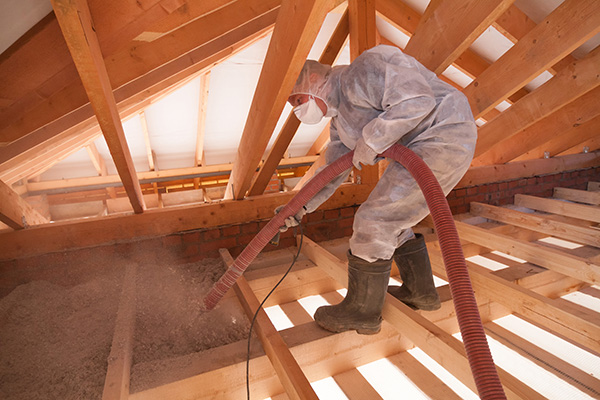How to Choose the Right Insulated Roof for Your Climate
Author: Sheryll Poe | August 7, 2024
When most people think of insulation, they think of cold climates. While it's true that the additional layer keeps warm air in and cold air out, a properly insulated roof is important no matter where you live — including cold, hot, humid or extreme climates.
Here's a bit about the different roof insulation types to manage the specific qualities of each climate.

Selecting the Right Insulation
Homeowners have a lot of options when it comes to deciding on the type of roof insulation they want. These include:
- Blanket insulation: Relatively inexpensive and sold at just about every hardware store, blanket insulation comes in batts or rolls that are pre-measured to work with standard stud and joist spacing, or it can be cut to fit. Blanket insulation is available in all types of materials, the most common being fiberglass, cellulose, plastic fibers or natural fibers, including wool, cotton or even recycled blue jeans.
- Loose insulation: Loose-fill insulation is made up of small particles of fiber, foam or other materials. The most common materials used in loose-fill insulation are fiberglass, rockwool and cellulose. Thanks to its small, loose structure, loose-fill insulation can fit into existing finished spaces as well as awkwardly shaped spaces or hard-to-reach areas.
- Foam or rigid boards: These rigid panels of insulation are made from closed-cell foam, usually polystyrene or mineral wool. Foam boards are especially effective in exterior wall sheathing, interior sheathing for basement walls and special applications such as attic hatches.
- Spray foam: Spray foam, which is typically made with polyurethane, comes in two types: the less expensive open cell, which is filled with air and has a sponge-like texture; and the denser, closed-cell foam, which is filled with a gas that helps the foam expand to fill the spaces around it.
The Role Climate Plays
Different climates require different insulation R-values. R-value refers to an insulation's ability to resist heat flow. The higher the R-value, the greater the insulating power. So if you live somewhere cold, like the Northeast, you'll need a higher R-value of insulation than you would need if you live in the desert Southwest. ENERGY STAR has a map with suggested insulation R-values.
Cold Climates
For colder climates, the Insulation Institute recommends an R-value of over 49. Loose-fill fiberglass, blown-in cellulose and spray foam insulation — all of which have R-values of over 49 — work best for homes in cold areas. Not only do they fit in hard-to-reach or awkwardly shaped spaces, these insulation options will also form an air barrier, preventing heat from escaping through the roof.
Hot Climates
For hot climates, the primary goal is to keep cold, air-conditioned air in while increasing energy efficiency. Insulation with an R-value between 30 and 49 is recommended, depending on the specific area. Fiberglass or cellulose (in blanket or loose fill) comes in a variety of R-values that will work in hot climates.
Another thing to consider if a home is in a hot climate with a lot of direct sunlight: radiant barriers, which use highly reflective materials to reflect heat away from the attic.
Rigid insulation boards, including those made with polyisocyanurate (polyiso) foam or extruded polystyrene (XPS) foam, come with foil radiant barriers already built in on one side.
Humid Climates
Fiberglass is the best option for homes in humid areas. The material is not only fire-resistant but also water-resistant, which can prevent moisture buildup and potential mold problems. Another good material for humid climates is mineral wool, either in loose fill or in batts (blanket insulation). Even if mineral wool becomes wet, it dries out quickly and does not mold.
Cellulose, which is made of recycled newspaper and cardboard, absorbs moisture out of the air. It also degrades quicker — as soon as 15 years after installation.
Extreme Climates
Insulation boards made of fiber cement — a mixture of cement, cellulose and sand — are fire-resistant and can stand up in extreme weather, but they're more expensive than other options and can be heavy and difficult to install.
Similarly, structural insulated panels (SIPs) are extremely durable and can handle several pounds of weight, making them an excellent option for extreme weather areas. However, they are not designed to get wet, so a vapor barrier is recommended if using panels for roofing insulation.
Which Insulation Is Best for Your Roof?
Selecting the right roof insulation is one area where a bit of investment can make a big difference in increasing a home's comfort and reducing energy bills. Having a professionally installed insulated roof in place not only protects a home but also provides additional temperature control and is a great investment no matter the climate.